Creating a well-designed playroom transforms any space into a magical environment where children can learn, explore, and develop essential skills through play. Modern playroom design focuses on combining functionality with creativity, ensuring the space serves multiple purposes while sparking imagination. The key to successful playroom design lies in creating complete themed environments rather than simply adding isolated play elements. From sensory-rich developmental spaces to organized storage solutions, today's playroom concepts emphasize adaptability, safety, and educational value. Professional designers now incorporate child development principles to create spaces that grow with children while promoting independence, creativity, and learning. Whether working with a dedicated room or a small corner, thoughtful planning ensures every playroom becomes a purposeful haven for childhood development and endless adventures.
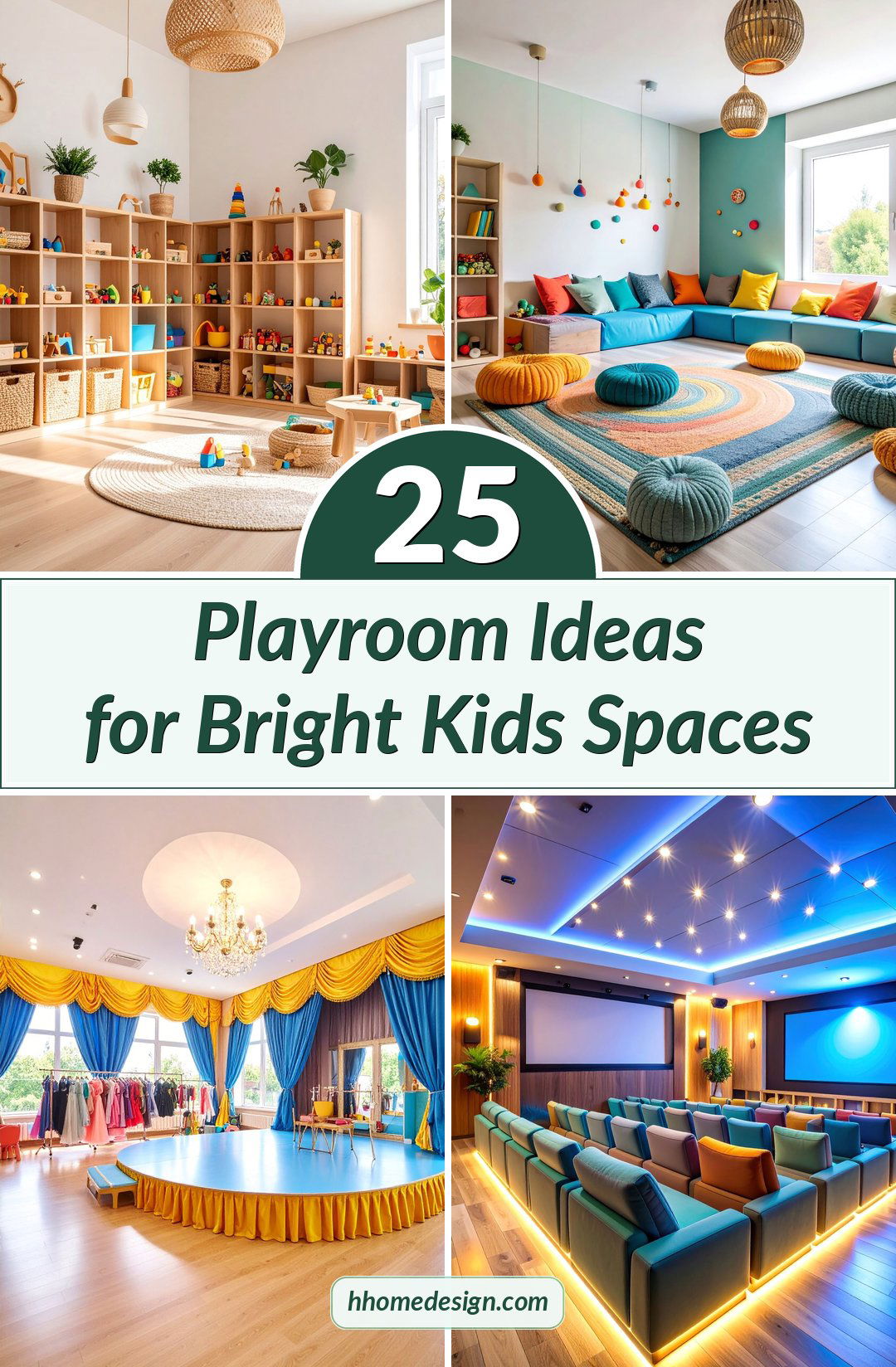
1. Modern Minimalist Playroom with Clean Organization

Modern minimalist playrooms embrace clean lines, neutral color palettes, and sophisticated storage solutions that appeal to both children and adults. This design concept features white or light wood furniture, geometric shapes, and carefully curated toys displayed on floating shelves. The color scheme typically includes soft grays, whites, and natural wood tones, creating a calming environment that reduces overstimulation. Essential furniture includes low-profile storage units, simple play tables, and modular seating that can be easily reconfigured. Open floor space encourages free movement and creative play, while hidden storage compartments maintain the uncluttered aesthetic. Natural lighting and minimal decorative elements create a serene atmosphere perfect for focused activities. This approach proves that playrooms can be both functional and stylish, seamlessly integrating with modern home design while providing an organized space for childhood development.
2. Space-Themed Adventure Galaxy Room

Transform your playroom into an interstellar adventure zone with cosmic decorations and space-inspired learning elements. This theme incorporates glow-in-the-dark stars on the ceiling, planet murals, and rocket ship furniture to create an immersive outer space experience. Dark blue walls serve as the backdrop for constellation patterns, while metallic silver accents add futuristic touches throughout the space. Interactive elements include a model solar system, astronaut dress-up costumes, and space-themed building sets. Educational components feature wall maps of the galaxy, astronomy books, and STEM toys that teach about planets and space exploration. Soft LED lighting creates the perfect ambiance for space adventures, while rocket-shaped storage containers organize toys and supplies. Bean bags designed as planets provide comfortable seating for reading space books or planning imaginary missions to distant worlds.
3. Nature-Inspired Sensory Woodland Retreat

Create a peaceful woodland environment using green tones, natural materials like wood and stone, and living plants to bring outdoor tranquility indoors. This design features tree murals, forest animal decorations, and natural textures that stimulate sensory development. Wooden furniture, wicker baskets, and earth-tone fabrics create an organic atmosphere perfect for quiet play and exploration. Sensory elements include textured bark panels, smooth river rocks in discovery bins, and plants that children can touch and observe. A reading tent designed as a woodland hideaway provides a cozy retreat for storytelling and quiet activities. Natural lighting filtered through leaf-patterned window treatments enhances the outdoor feeling. This environment promotes mindfulness, environmental awareness, and sensory development while creating a calming space where children can connect with nature year-round through imaginative play and hands-on exploration.
4. Montessori Learning Environment with Child-Centered Design

Montessori-inspired playrooms emphasize child-centered design with thoughtfully organized materials that promote independence, hands-on learning, and self-directed exploration. This approach features low, accessible shelving where toys and materials are displayed rather than hidden, allowing children to make their own choices. Natural materials predominate, including wooden toys, wicker baskets, and cotton fabrics in neutral tones. Everything has a designated place, teaching organization skills while making cleanup manageable for young children. Furniture is appropriately sized for independence, with small tables, chairs, and accessible storage solutions. The layout includes distinct areas for different activities: practical life skills, sensory exploration, language development, and mathematical concepts. This design grows with the child, as materials can be rotated and upgraded while maintaining the same organizational principles. The result is a purposeful environment that respects children's natural development.
5. Art Studio Creative Expression Center
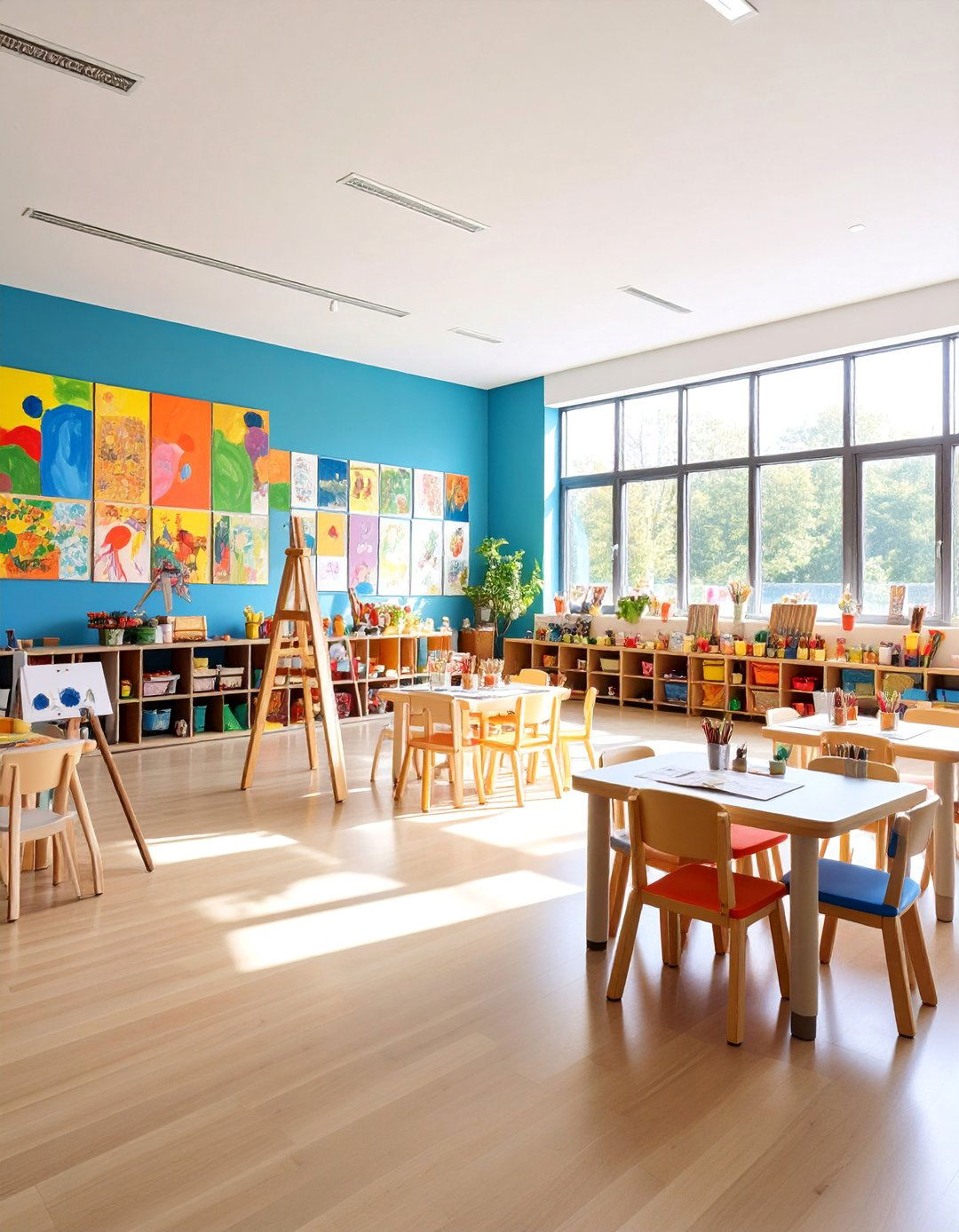
Design a dedicated art space that encourages creativity with organized supplies and inspiring displays of children's artwork. This studio features easels, art tables, and accessible storage for paints, brushes, papers, and craft materials. Gallery walls showcase rotating displays of children's creations in colorful frames, building confidence and pride in artistic achievements. Easy-to-clean surfaces include washable paint on walls, wipeable tables, and protective floor mats for messy projects. Rolling carts provide mobile storage for supplies, allowing art materials to move wherever creativity strikes. Good lighting is essential, combining natural light with adjustable task lighting for detailed work. Color-coded organization systems help children find and return supplies independently. A drying rack for wet artwork and portfolios for storing finished pieces complete this creative environment. This space celebrates artistic expression while teaching organization and care for materials.
6. Cozy Reading Nook Literary Sanctuary
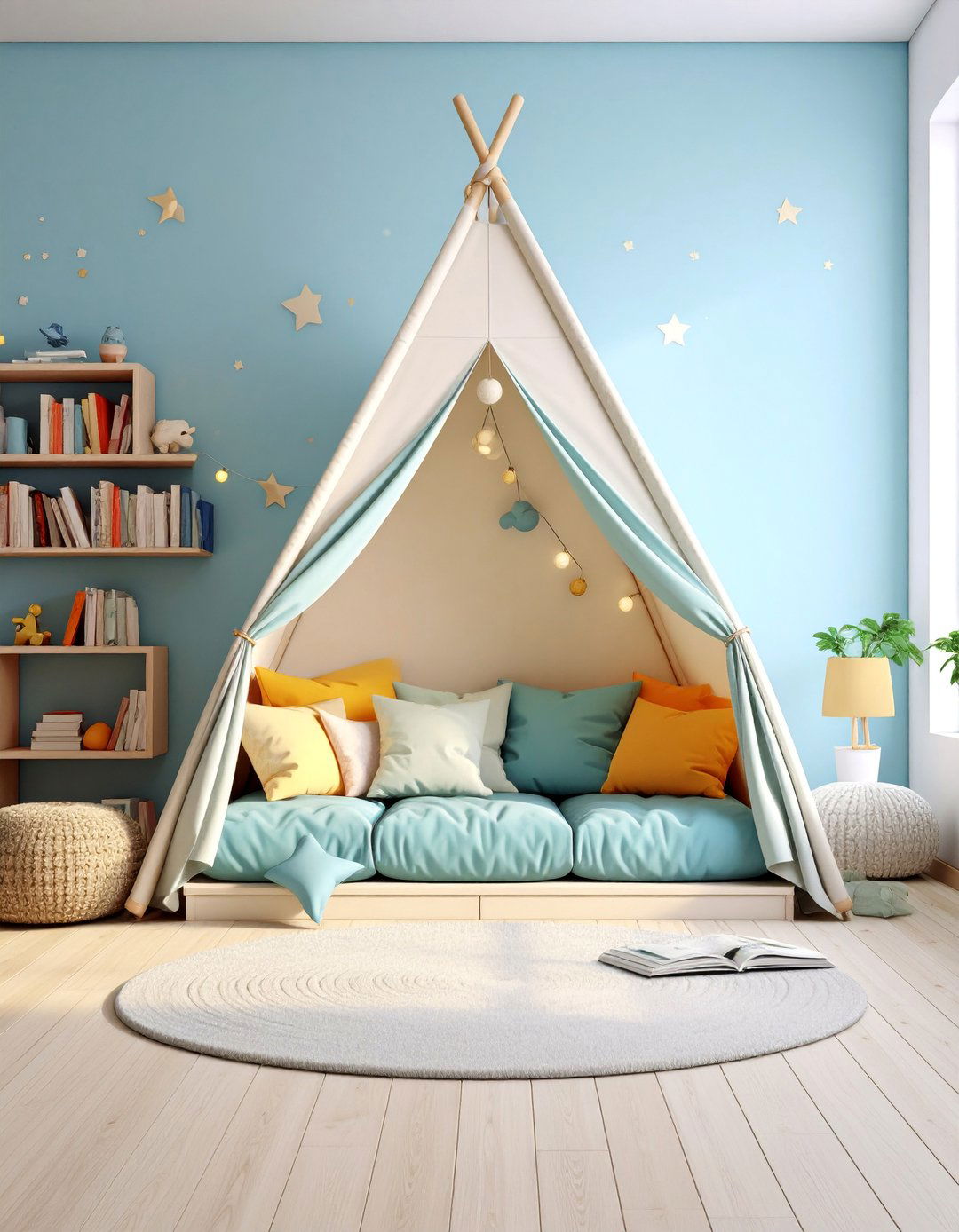
Create an inviting reading corner that fosters a love of literature with comfortable seating, good lighting, and accessible book storage. This design typically features a small tent, canopy, or built-in alcove that provides a sense of privacy and coziness for quiet reading time. Soft cushions, plush rugs, and throw pillows create comfortable seating arrangements that accommodate different reading positions. Picture ledges or low bookshelves display books with covers facing forward, making selection easy and visually appealing. Warm lighting options include reading lamps, string lights, or natural light from nearby windows. Neutral colors with soft accent tones create a calming atmosphere that encourages focus and relaxation. Storage benches provide additional seating while hiding extra books, blankets, or reading accessories. This dedicated literary space demonstrates the importance of reading while providing a peaceful retreat from more active play areas within the larger playroom environment.
7. Active Climbing Adventure Playground

Install climbing walls, monkey bars, and physical activity equipment to create an indoor adventure course that promotes gross motor development. This active zone requires careful safety planning with proper padding, crash mats, and age-appropriate climbing holds. The design incorporates multiple levels and challenge options to accommodate different ages and skill levels. Gym mats in soothing colors provide safe landing surfaces while encouraging various gymnastic movements that increase flexibility, strength, and coordination. Storage solutions include hooks for climbing gear and cubbies for safety equipment. Additional elements might include a mini trampoline, balance beams, or rope swings that provide proprioceptive and vestibular input. Bright, energizing colors motivate active play, while proper ventilation ensures comfort during physical activities. This dynamic environment helps children develop confidence, physical skills, and spatial awareness while providing an outlet for high-energy play regardless of weather conditions outside.
8. Dress-Up Theater Performance Stage
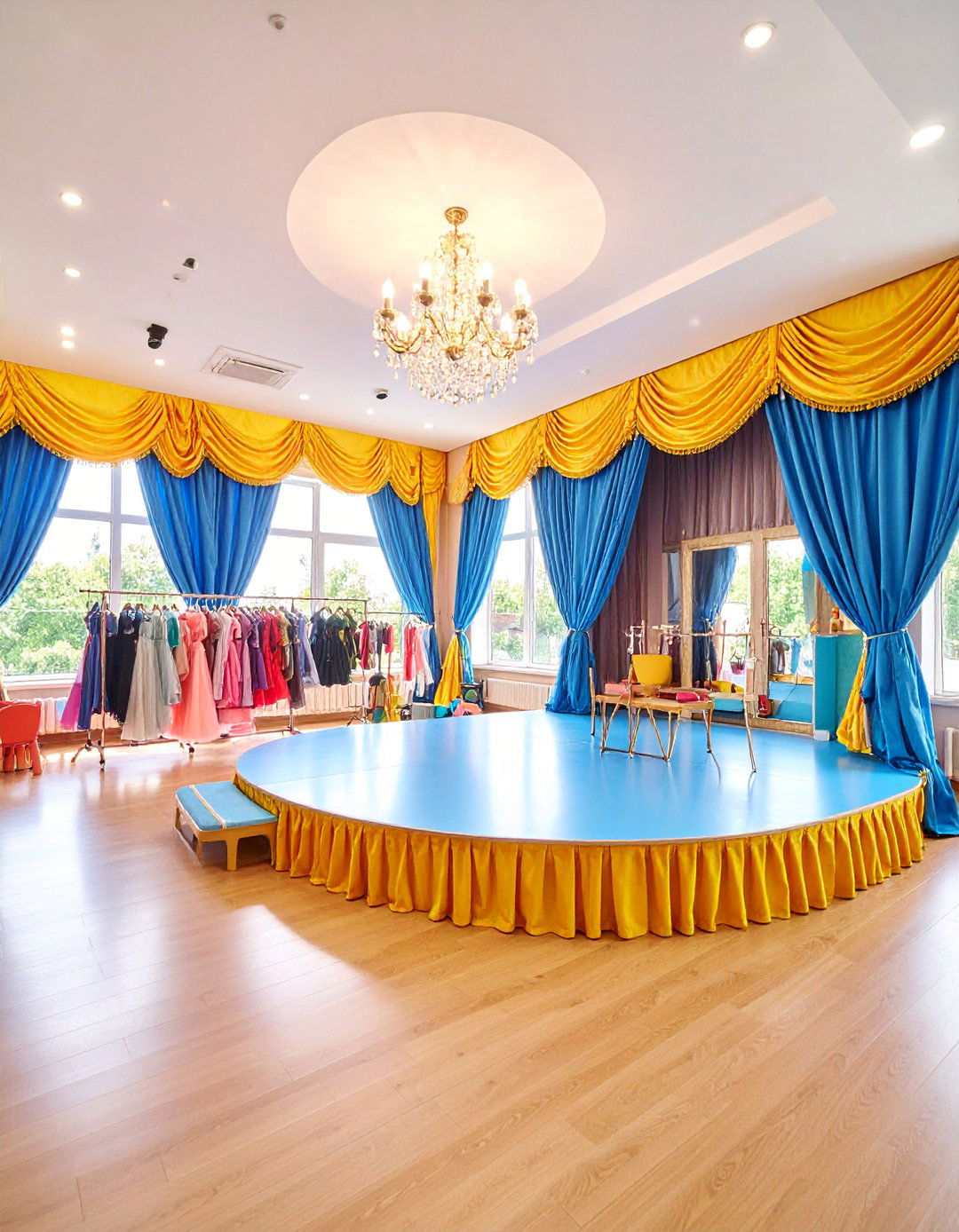
Create a theatrical corner complete with costumes, props, mirrors, and a performance area where children can explore dramatic play and self-expression. This design features organized costume storage on hooks or in labeled bins, making dress-up clothes easily accessible and visible. A small stage area with curtains creates an authentic theater feel, while mirrors allow children to see their transformations. Props might include musical instruments, magic wands, crowns, and character accessories that support various role-playing scenarios. Audience seating provides space for family performances and encourages social interaction during pretend play. Good lighting, including spotlights or string lights, enhances the theatrical atmosphere. Storage solutions include costume racks, prop boxes, and makeup accessories organized in clear containers. This creative environment builds confidence, language skills, and social development while providing endless opportunities for imaginative storytelling and character exploration through dramatic play experiences.
9. STEM Learning Laboratory Discovery Zone

Design an educational space focused on science, technology, engineering, and mathematics with hands-on learning materials and interactive experiments. This laboratory setting includes child-sized work surfaces, organized storage for building materials, and safety equipment for simple experiments. Essential components include magnetic walls, science kits, building blocks, and interactive board games that challenge intellect while promoting problem-solving skills. Clear storage containers allow children to see and access materials independently, encouraging self-directed exploration. Technology elements might include age-appropriate tablets, simple robotics kits, or microscopes for detailed observations. Construction elements feature various building sets, tools, and engineering challenges that develop spatial reasoning and critical thinking. Charts displaying mathematical concepts, scientific principles, or engineering processes provide visual learning support. This environment demonstrates that learning can be fun while building foundation skills for future academic success through hands-on discovery and experimentation.
10. Cozy Movie Theater Entertainment Hub
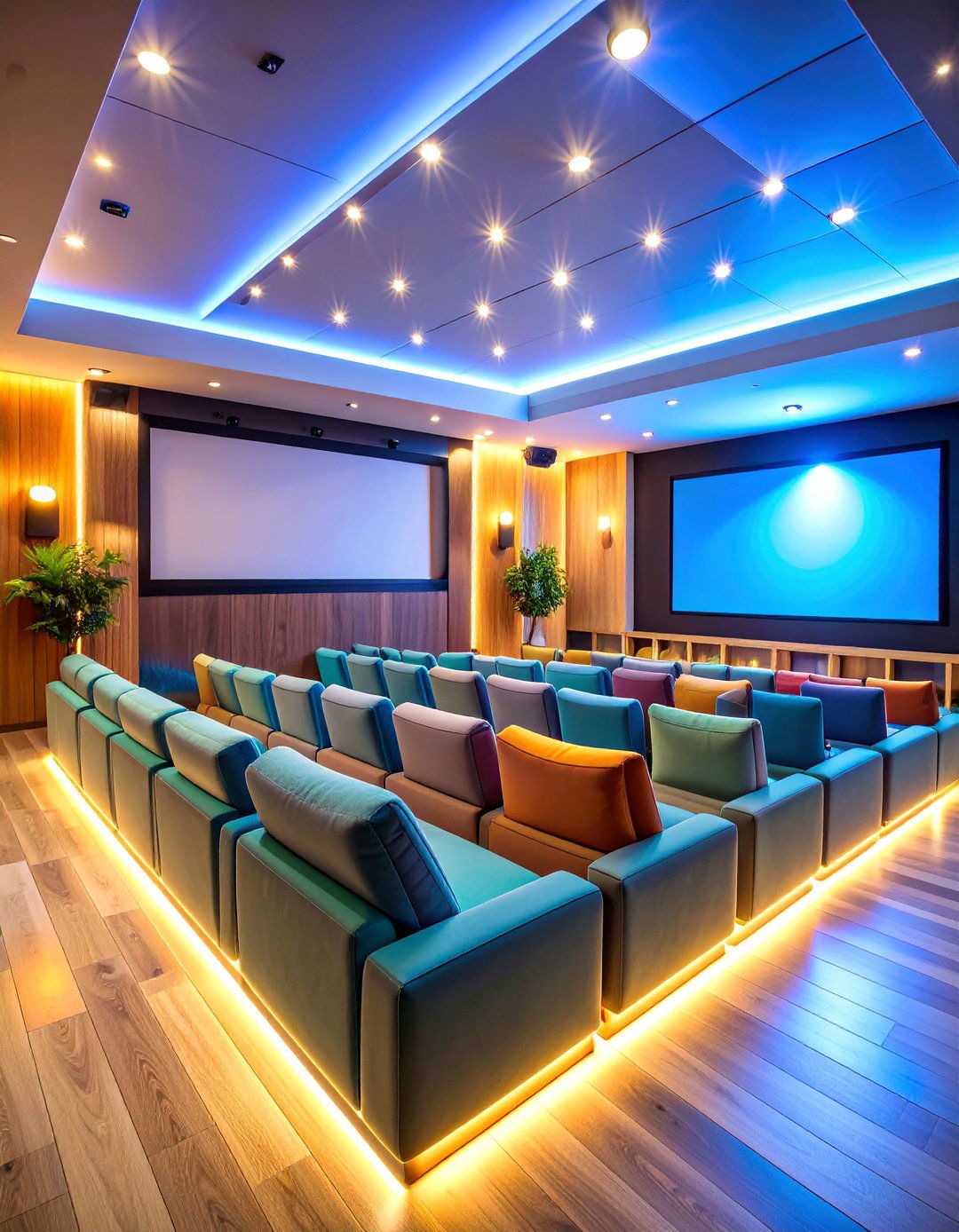
Transform part of the playroom into a mini cinema with comfortable seating arrangements, soft ambient lighting, and carefully curated movie collections. This entertainment zone features plush floor cushions, bean bags, or a small sectional sofa arranged for optimal viewing comfort. Soft lighting options include dimmable fixtures, string lights, or LED strips that create a theater-like atmosphere without interfering with screen visibility. Comfortable seating that can double as reading furniture or fort-building materials maximizes functionality in the space. Storage solutions organize movie collections, blankets, and snack supplies within easy reach. Sound considerations include appropriate volume controls and possibly noise-dampening materials to respect other areas of the home. A small side table or cart holds movie night snacks and drinks safely. This designated entertainment area encourages family bonding time while providing a calm activity option that balances more active play experiences throughout the playroom.
11. Multi-Functional Small Space Solution

Maximize limited square footage with vertical storage, convertible furniture, and cleverly organized zones that serve multiple purposes efficiently. This compact design utilizes wall-mounted shelves, hanging organizers, and furniture that transforms between different functions throughout the day. Sliding storage bins and cube organizers provide maximum organization while maintaining easy access to toys and supplies. Folding tables can serve as art surfaces, homework desks, or game tables depending on current needs. Vertical file holders organize books, art supplies, or educational materials while taking minimal floor space. Color-coded organization systems help maintain order in the limited space available. Murphy-style furniture or wall-mounted desks fold away when not in use. Modular storage systems grow and adapt as children's needs change, ensuring long-term functionality. This efficient approach proves that even small spaces can provide rich play experiences with thoughtful planning and creative solutions.
12. Organized Storage Showcase System
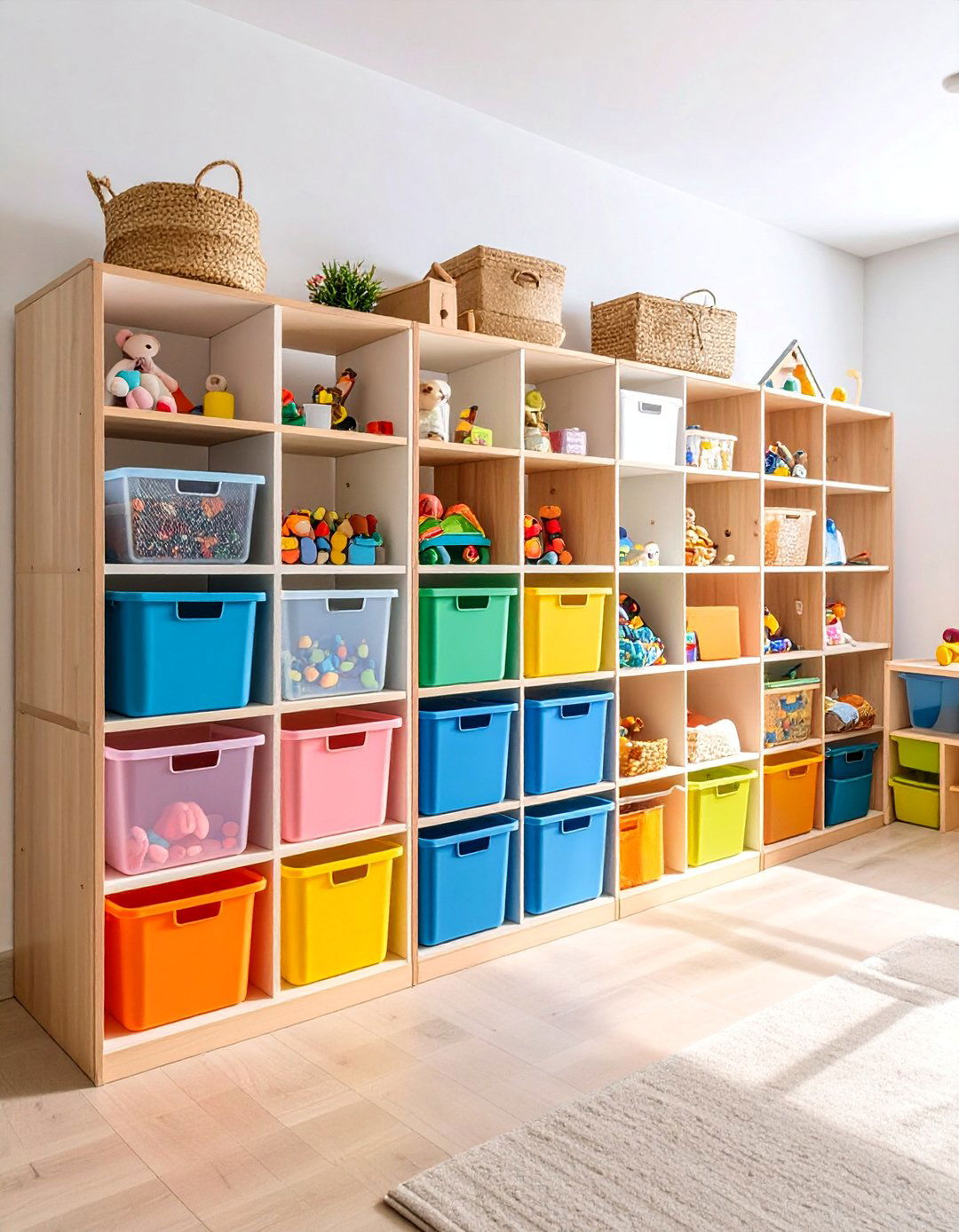
Create a playroom that demonstrates perfect organization with visible storage systems, labeling, and easy-access solutions that teach children organizational skills. This design features clear containers, labeled bins, and color-coded systems that make finding and returning toys simple and intuitive. IKEA TROFAST systems or similar modular storage provide flexibility to adapt as toy collections change and grow. Open shelving displays toys attractively while keeping them accessible for independent play choices. Different storage types accommodate various toy sizes: bins for small items, shelves for books, and baskets for larger toys. Visual schedules and organization charts help children understand where items belong. Toy rotation systems keep the space fresh while preventing overwhelming choices that can inhibit play. Regular organization sessions become fun family activities that teach responsibility and care for belongings. This systematic approach creates a calm, functional environment where children can focus on play rather than searching for misplaced items.
13. Indoor Outdoor Adventure Exploration Space
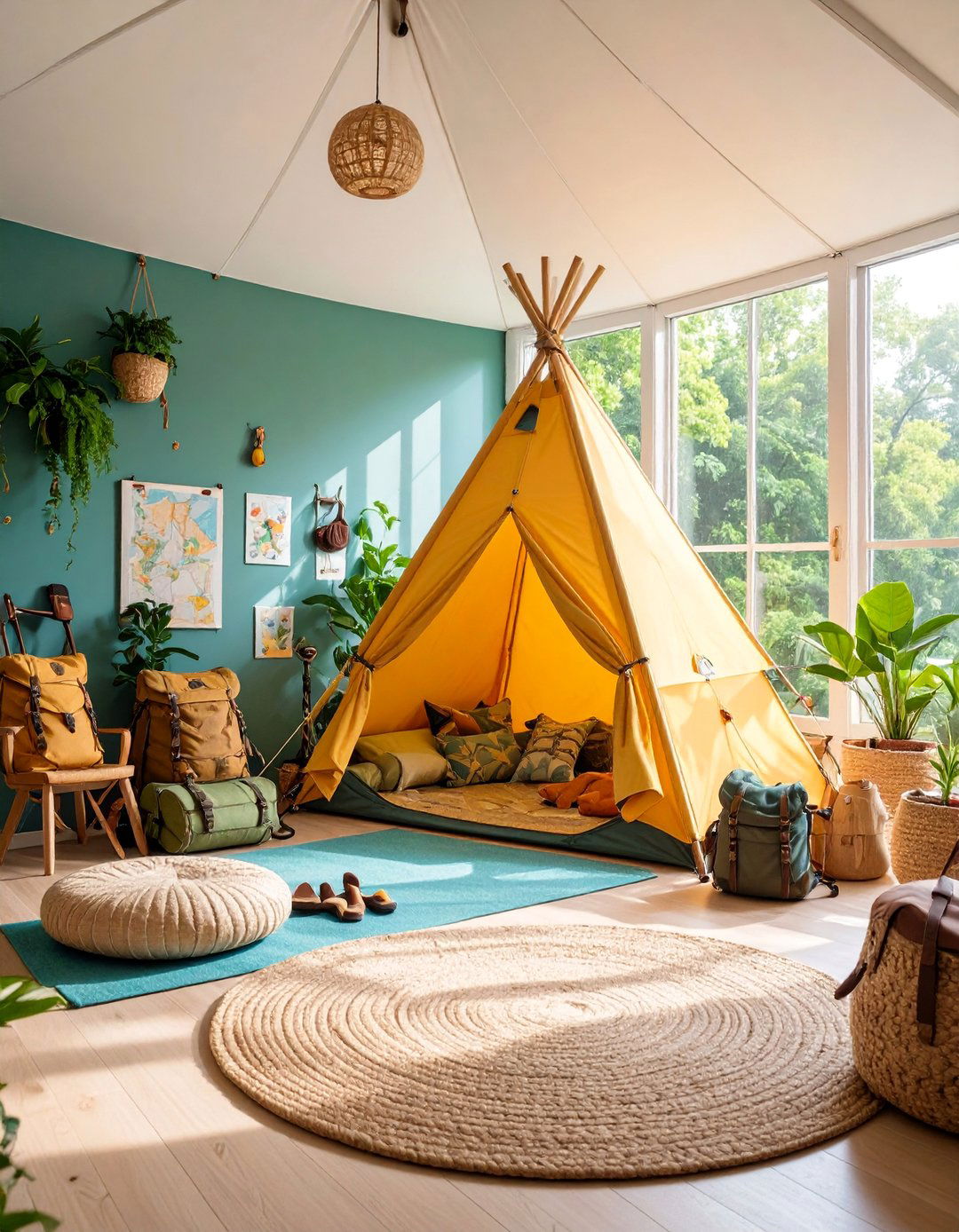
Bring outdoor adventure indoors with camping themes, nature exploration tools, and adventure-inspired furniture and decorations. This design incorporates camping tents, sleeping bags, and outdoor gear that children can use for indoor adventures and imaginative play. Interactive elements include maps, compasses, binoculars, and exploration tools that encourage discovery and adventure-based learning. Natural materials like wood, rope, and canvas create an authentic outdoor feeling within the indoor space. Storage solutions might include vintage suitcases, hiking backpacks, or camping gear organizers. Educational components feature geography materials, nature guides, and travel literature that inspire curiosity about the wider world. Earth-tone colors and rustic textures enhance the outdoor adventure theme throughout the space. A designated fort-building area with blankets and poles encourages construction and spatial reasoning skills. This environment promotes physical activity, problem-solving, and appreciation for nature while providing safe indoor exploration opportunities year-round.
14. Music and Rhythm Creative Sound Studio

Design a musical environment with instruments, sound exploration tools, and rhythm activities that develop auditory skills and musical appreciation. This studio includes child-sized instruments like tambourines, xylophones, keyboards, and drums that nurture a love for rhythm and sound. Sound-absorbing materials help contain noise while allowing for musical expression and experimentation. Calming music options and sound machines provide background ambiance or relaxation tools when needed. Storage solutions organize instruments by type and size, making them easily accessible for spontaneous musical moments. Visual aids might include musical notation charts, rhythm patterns, or composer portraits that introduce musical concepts. Comfortable seating areas allow for listening activities, music appreciation, or quiet musical exploration. Recording equipment or simple music apps can capture and playback children's musical creations. This dedicated musical space encourages self-expression, auditory development, and appreciation for the arts while providing a creative outlet that complements other playroom activities.
15. Building and Construction Workshop Zone
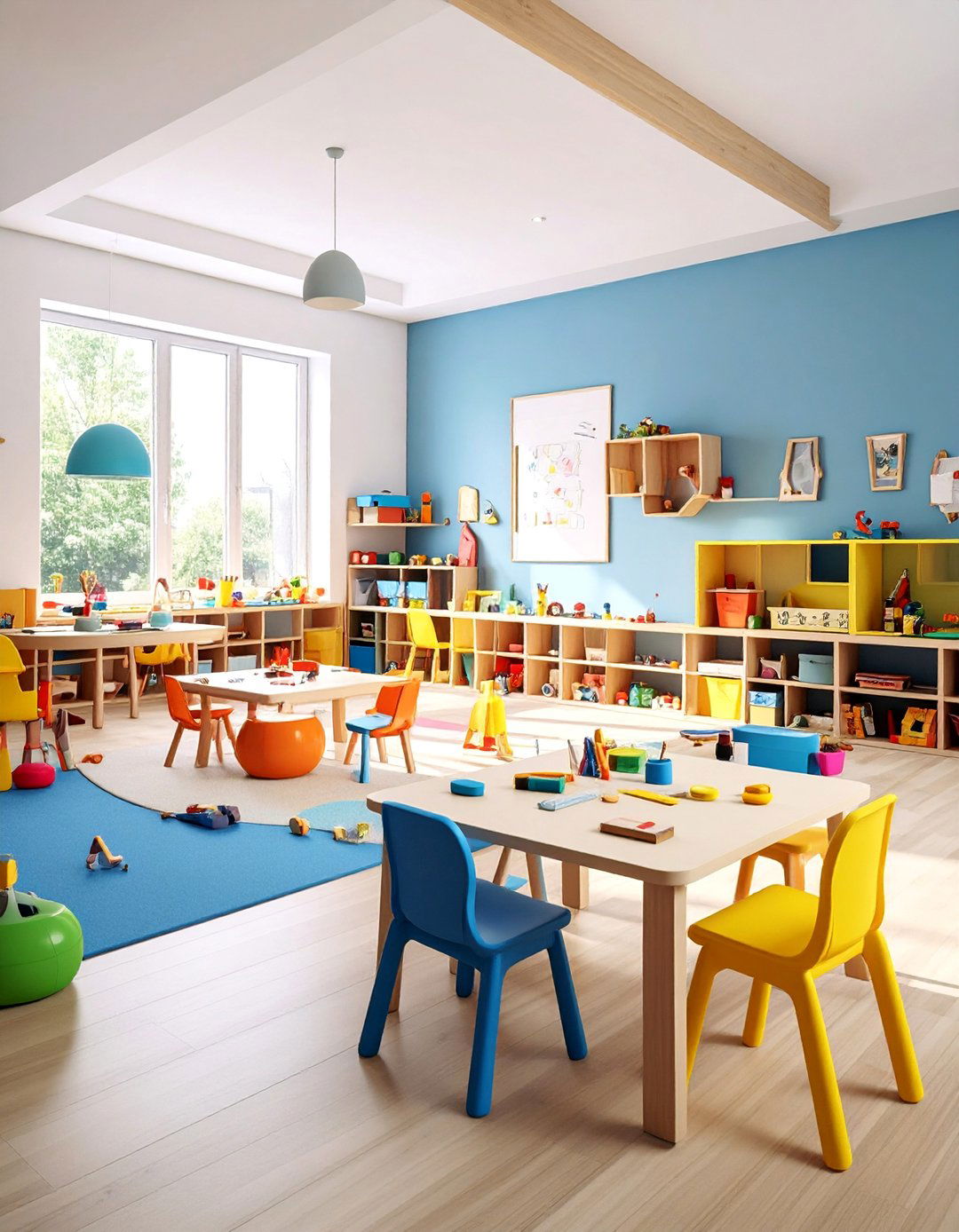
Establish a dedicated construction area with workbenches, building materials, and engineering challenges that develop spatial reasoning and problem-solving abilities. This workshop includes child-safe tools, various building sets, and construction-themed storage solutions. LEGO baseplates attached to storage unit tops allow children to build and display creations directly on the organizational furniture. Different building materials accommodate various skill levels and interests: wooden blocks, magnetic tiles, engineering sets, and architectural challenges. Clear storage containers organize pieces by type, color, or set, making construction projects more manageable and enjoyable. Work surfaces at appropriate heights ensure comfortable building experiences while promoting good posture and fine motor development. Project inspiration books, building challenges, and engineering concepts provide guided activities alongside free-form construction play. This hands-on environment teaches persistence, planning, and creative problem-solving while building confidence in STEM-related skills through engaging construction challenges and projects.
16. Fairy Tale Enchanted Forest Theme
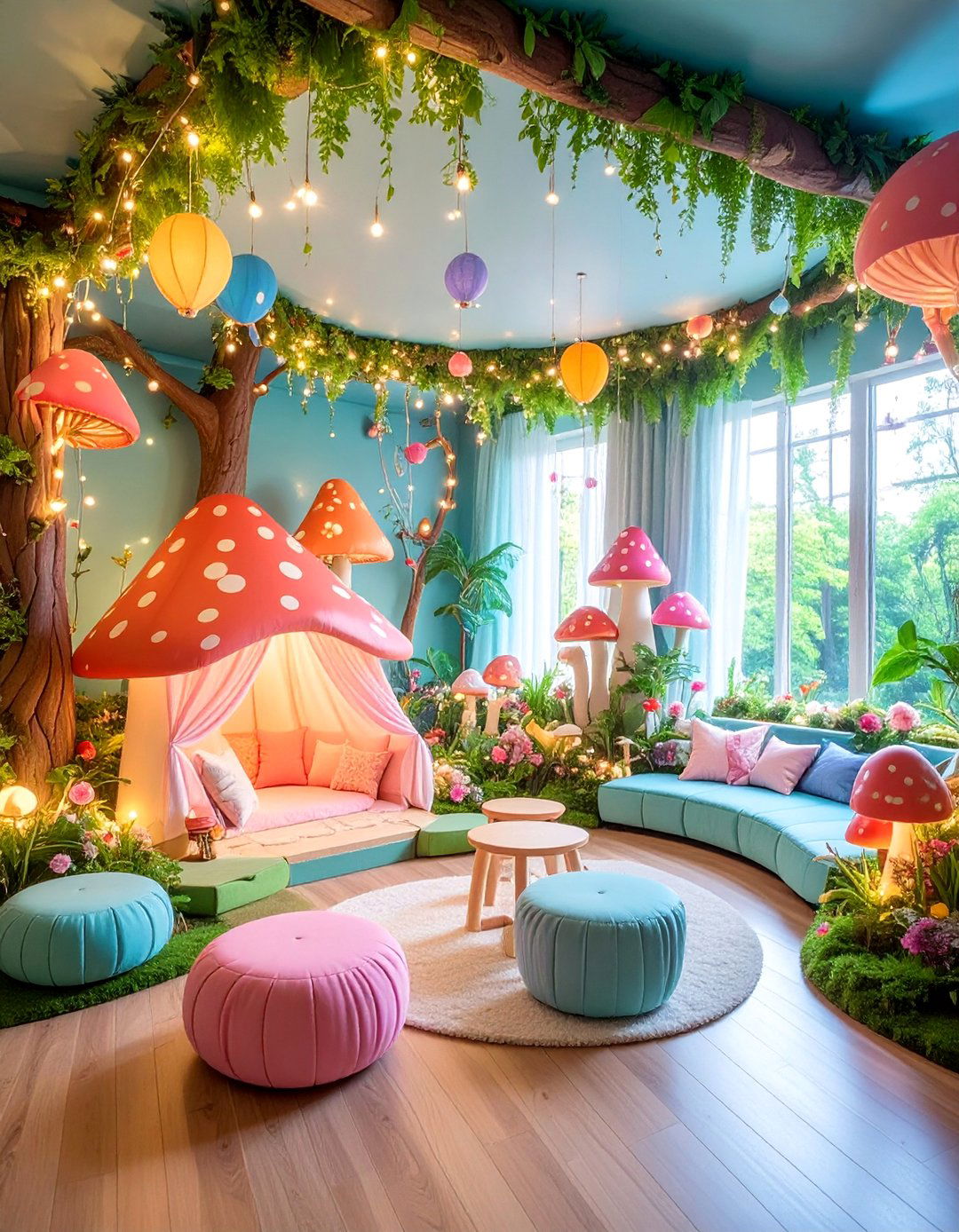
Create a magical woodland setting with fairy tale characters, enchanted decorations, and whimsical elements that spark imagination and storytelling. This design features tree murals, toadstool seating, and fairy lights that transform the space into an enchanted realm. Pastel colors, natural materials, and soft textures create a dreamy atmosphere perfect for imaginative play and quiet activities. Story-inspired props include castles, fairy wings, magic wands, and character costumes that support role-playing activities. Reading materials focus on classic fairy tales, fantasy stories, and magical adventures that complement the themed environment. Soft lighting options include string lights, lanterns, and color-changing LED elements that enhance the magical ambiance. Natural materials like wood, moss, and flowers (artificial for safety) create authentic forest textures. Interactive elements might include treasure hunts, magic mirrors, or storytelling prompts that encourage creative narrative development. This enchanting environment promotes language development, creativity, and emotional expression through fantasy-based play experiences.
17. Under-Stairs Hideaway Secret Space

Transform unused under-stair space into a magical hideaway that provides privacy and specialized play opportunities in compact areas. This creative solution maximizes awkward spaces by creating cozy retreats perfect for quiet activities and imaginative play. Design elements might include Dutch doors, whimsical paint schemes, or themed decorations that make the space feel like a miniature house. Built-in storage utilizes every inch efficiently with custom shelving, hidden compartments, and multi-functional furniture. Lighting becomes crucial in these enclosed spaces, requiring creative solutions like LED strips, small windows, or skylights. Ventilation considerations ensure comfort and safety in the enclosed environment. Themed decorations might include playhouse elements, reading nook accessories, or secret clubhouse features that make the space feel special and exclusive. This innovative approach demonstrates how even challenging architectural features can become valuable play spaces with creativity and thoughtful planning.
18. Basement Activity Center Recreation Hub
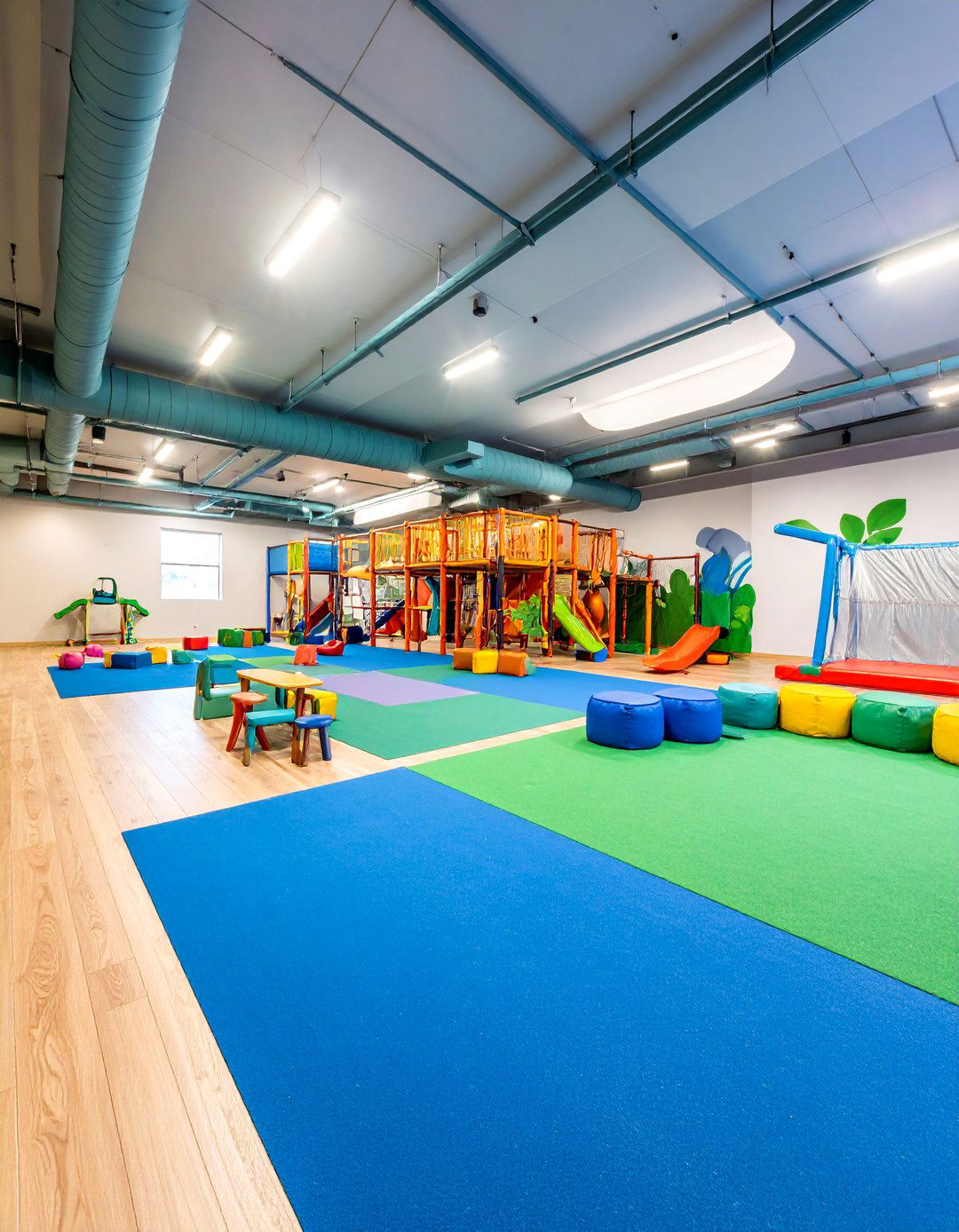
Convert basement space into a comprehensive activity center with proper lighting, climate control, and zoned areas for different types of play. This lower-level transformation requires attention to moisture control, adequate lighting, and comfortable temperature regulation for year-round use. Design elements might include climbing walls, projection systems for movies, or large-scale building areas that take advantage of higher ceilings. Flooring considerations include water-resistant materials, cushioned surfaces for active play, and easy-to-clean options for art activities. Storage solutions can be more robust in basement settings, including larger shelving units, tool storage, and bulk toy organization. Safety features include proper egress windows, smoke detectors, and child-safe electrical installations. Multiple activity zones might include exercise areas, craft spaces, gaming sections, and quiet retreats that accommodate various interests and energy levels. This comprehensive approach creates a family entertainment destination that serves multiple age groups and activity preferences.
19. Gender-Neutral Rainbow Bright Theme
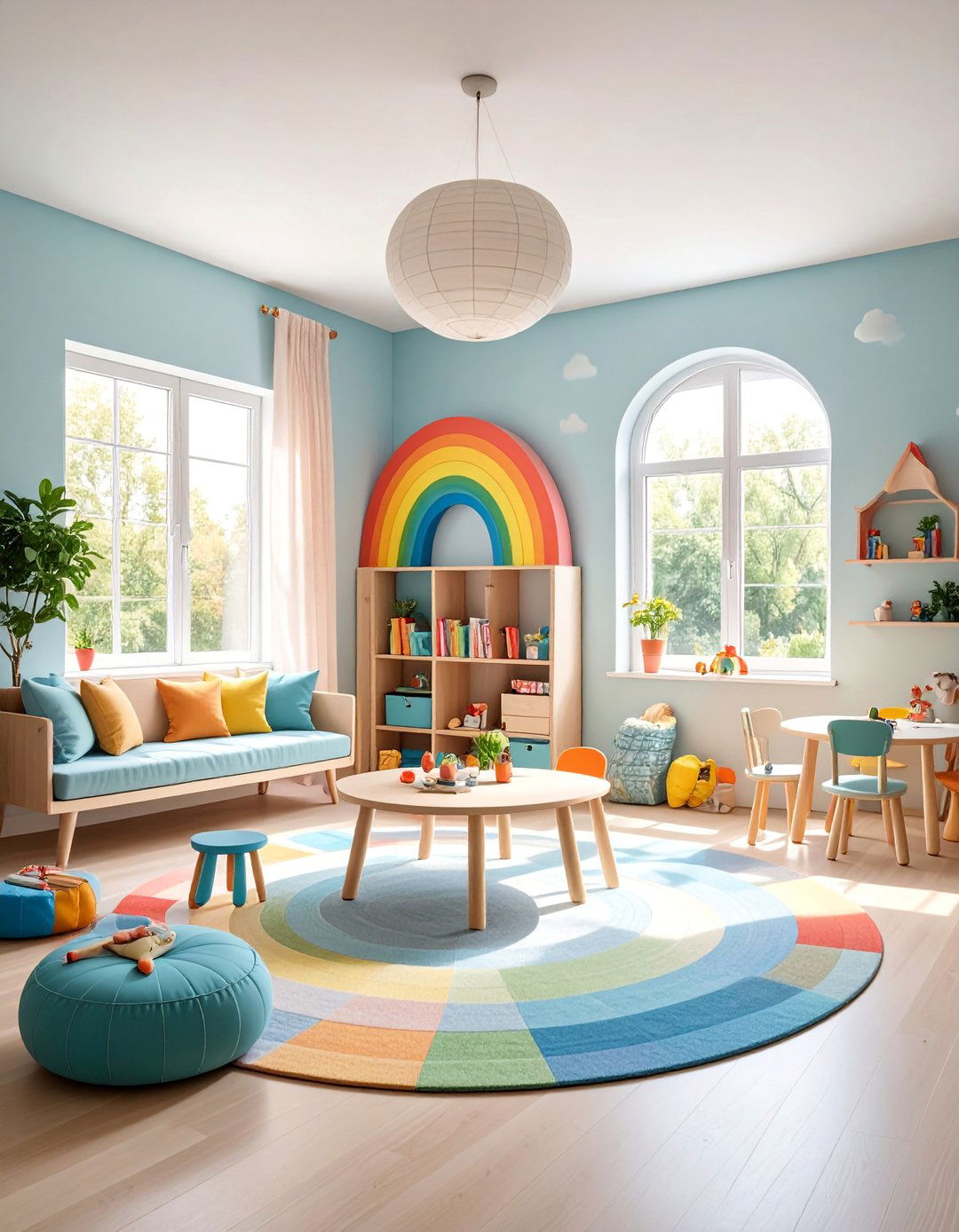
Design a vibrant, inclusive space using rainbow colors and universal themes that appeal to all children regardless of gender preferences. This colorful approach infuses the space with energy and joy while maintaining visual balance through thoughtful color distribution. Color psychology considerations ensure that bright hues energize without overwhelming, creating an uplifting atmosphere that encourages creative play. Storage solutions incorporate rainbow organization systems where toys are sorted by color, making cleanup fun and educational. Universal themes like nature, science, art, or adventure ensure that all children feel included and inspired to explore. Furniture choices favor bold, colorful pieces that can grow with changing preferences over time. Interactive elements include color-matching games, rainbow building challenges, and art projects that celebrate diversity and inclusion. Lighting design enhances the colorful theme while providing appropriate illumination for various activities throughout the space. This inclusive environment promotes creativity while teaching color recognition and celebrating the beauty of diversity.
20. Quiet Sensory Retreat Calming Zone
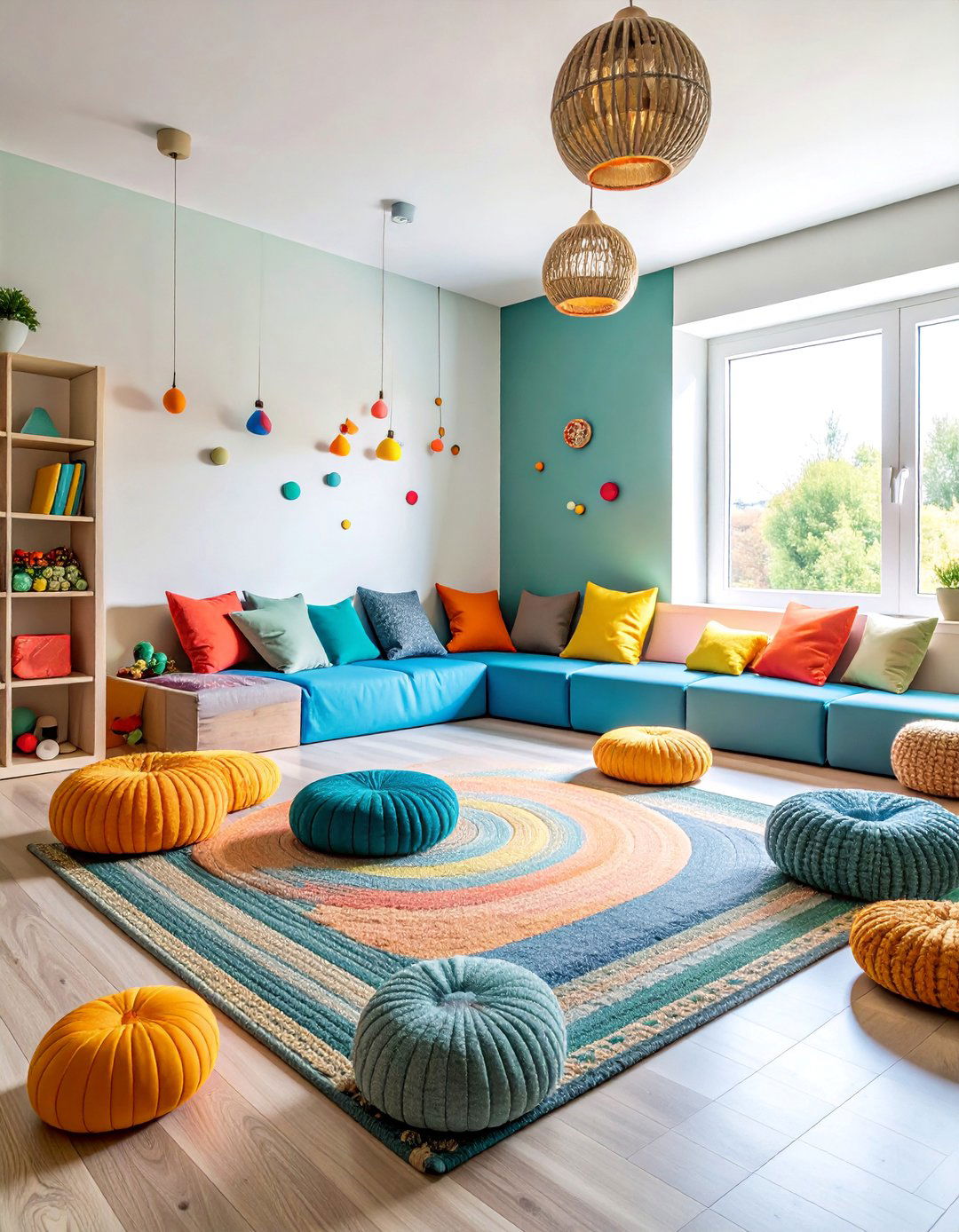
Establish a dedicated calm-down space with sensory-friendly elements, soft lighting, and soothing materials that help children self-regulate emotions. This retreat includes comfortable seating like bean bags, weighted blankets, and soft cushions that provide proprioceptive input for calming. Essential elements include noise-canceling options, textured materials, and calming visual stimuli that reduce overstimulation. Color schemes favor soft blues, greens, and neutral tones that promote relaxation and emotional regulation. The space design eliminates excessive visual stimuli while providing necessary sensory input through carefully selected materials and textures. Calming tools might include fidget toys, stress balls, favorite books, sound machines, or soft music that support emotional regulation. Privacy features help children feel secure while learning to manage their emotions independently. This therapeutic environment supports children with sensory processing needs while teaching all children valuable self-regulation skills. The result is a peaceful sanctuary that promotes emotional wellness and social-emotional development.
21. Interactive Wall Playground Learning Surface

Design walls as interactive learning surfaces with chalkboard paint, magnetic panels, and educational displays that maximize vertical space for activities. This approach transforms ordinary walls into dynamic play and learning environments that engage children at their level. Wall-mounted elements might include magnetic boards, interactive maps, educational charts, or science displays that encourage exploration and discovery. Chalkboard walls provide creative expression opportunities while offering easy cleanup and endless artistic possibilities. Storage integrated into wall systems includes hanging organizers, wall-mounted bins, and vertical file systems that maximize floor space. Interactive features encourage collaborative play and learning through shared wall activities and group projects. Height considerations ensure that interactive elements are accessible to children of various ages and abilities. Educational content can be rotated seasonally to maintain interest and introduce new learning concepts throughout the year. This innovative approach demonstrates how walls can become valuable play surfaces rather than just decorative boundaries.
22. Craft and Creation Maker Station

Establish a comprehensive crafting area with organized supplies, project storage, and display areas that encourage artistic exploration and skill development. This dedicated space includes work surfaces at appropriate heights, good lighting for detailed work, and easy-to-clean materials for messy projects. Organization systems feature clear containers, labeled storage, and portable caddies that make supplies accessible while teaching responsibility. Display areas showcase works in progress and completed projects, building confidence and encouraging continued creativity. Essential supplies include various papers, art tools, adhesives, and decorative materials organized by type and frequency of use. Gallery walls or bulletin boards provide rotating exhibition space for children's creations, celebrating artistic achievements. Protective elements include floor coverings, smocks, and easy-wipe surfaces that contain messes while encouraging fearless experimentation. Project inspiration books, technique guides, and skill-building activities provide structured learning opportunities alongside free-form creative expression. This comprehensive crafting environment nurtures artistic development while teaching organization and project completion skills.
23. Adventure Obstacle Course Challenge Arena
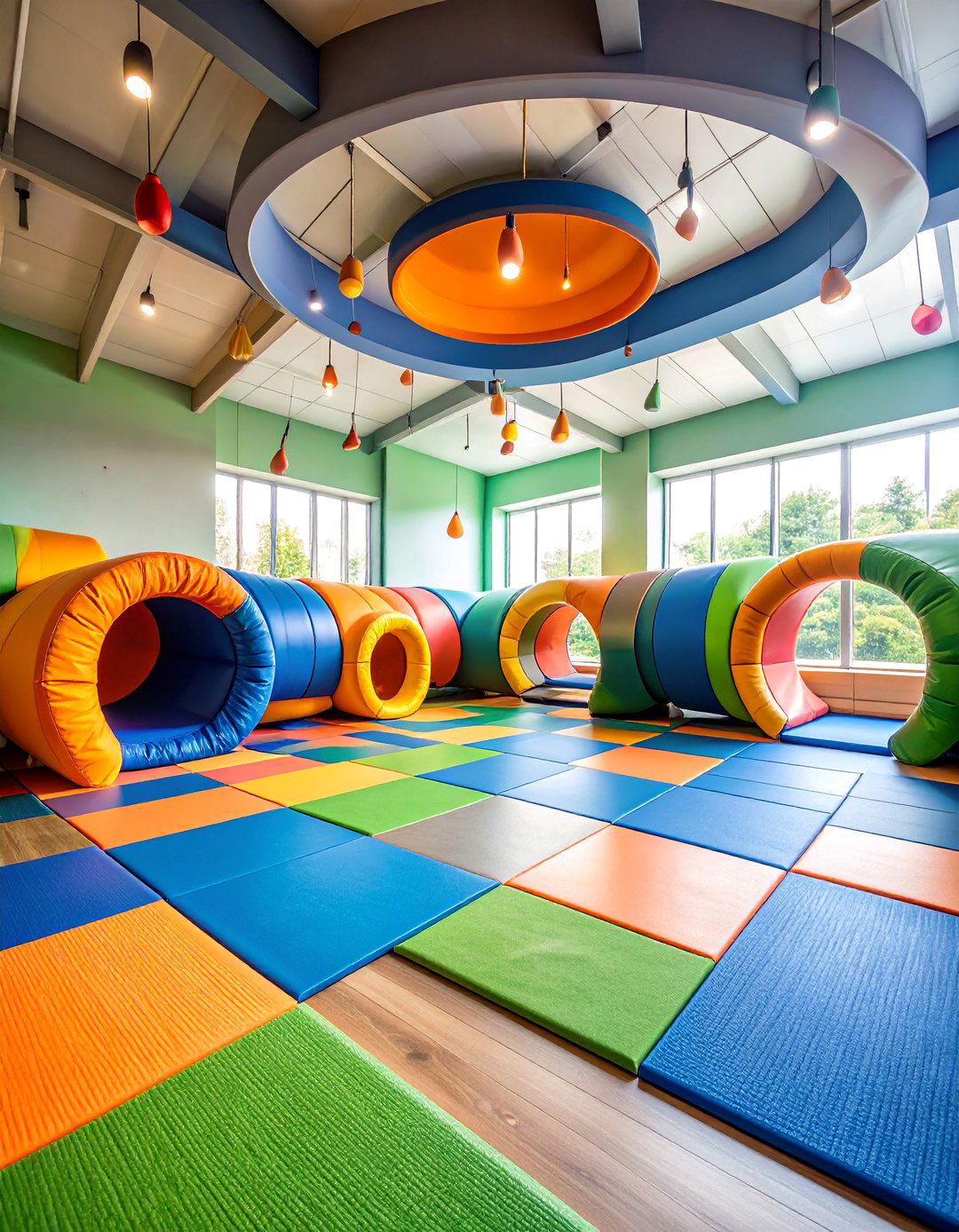
Create a dynamic physical challenge space with tunnels, balance beams, climbing elements, and movement activities that develop gross motor skills. This active environment requires careful safety planning with appropriate padding, age-suitable equipment, and clear boundaries for different activity zones. Elements might include mini trampolines, balance boards, climbing ropes, and crash pads that provide various physical challenges and sensory input. Modular equipment allows for course reconfiguration, maintaining novelty and adapting to different skill levels and interests. Storage solutions organize equipment when not in use while maintaining easy access for spontaneous active play sessions. Safety considerations include proper spacing, impact-absorbing surfaces, and age-appropriate challenge levels that build confidence gradually. Visual markers help children understand course sequences and challenge progressions. This environment particularly benefits high-energy children and those with sensory processing needs who require regular movement input. The result is an engaging physical space that promotes fitness, coordination, and confidence while providing healthy energy outlets.
24. Vintage-Inspired Play Cafe Restaurant Theme
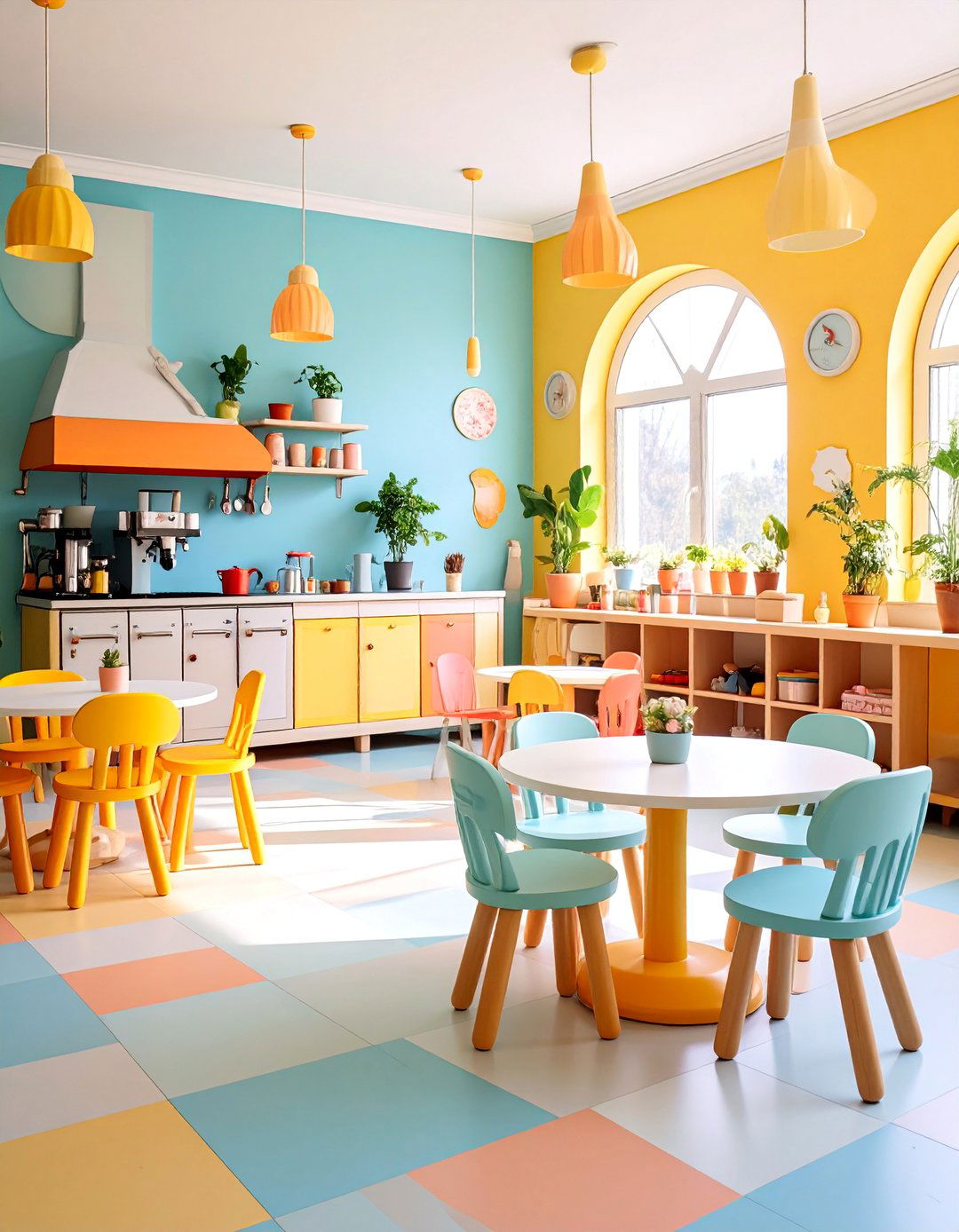
Design a charming play restaurant with vintage touches, pretend cooking equipment, and social dining experiences that encourage imaginative role-play. This theme incorporates play kitchens, dining furniture, and restaurant accessories that create authentic dramatic play opportunities. Essential elements include child-sized appliances, play food, serving dishes, and cash registers that support restaurant role-playing scenarios. Decorative touches might include vintage signs, checkered patterns, and cafe-style furniture that enhance the authentic atmosphere. Interactive elements encourage social skills development through cooperative play, turn-taking, and communication during restaurant scenarios. Storage solutions organize play food, dishes, and restaurant supplies in accessible but organized ways. Menu boards, order pads, and play money add realistic details that extend learning opportunities beyond simple pretend play. This social environment promotes language development, mathematical concepts through play transactions, and cultural awareness through food-related play. The vintage aesthetic creates a timeless atmosphere that appeals to various age groups while encouraging family involvement in dramatic play scenarios.
25. Growth-Adaptive Learning Evolution Space
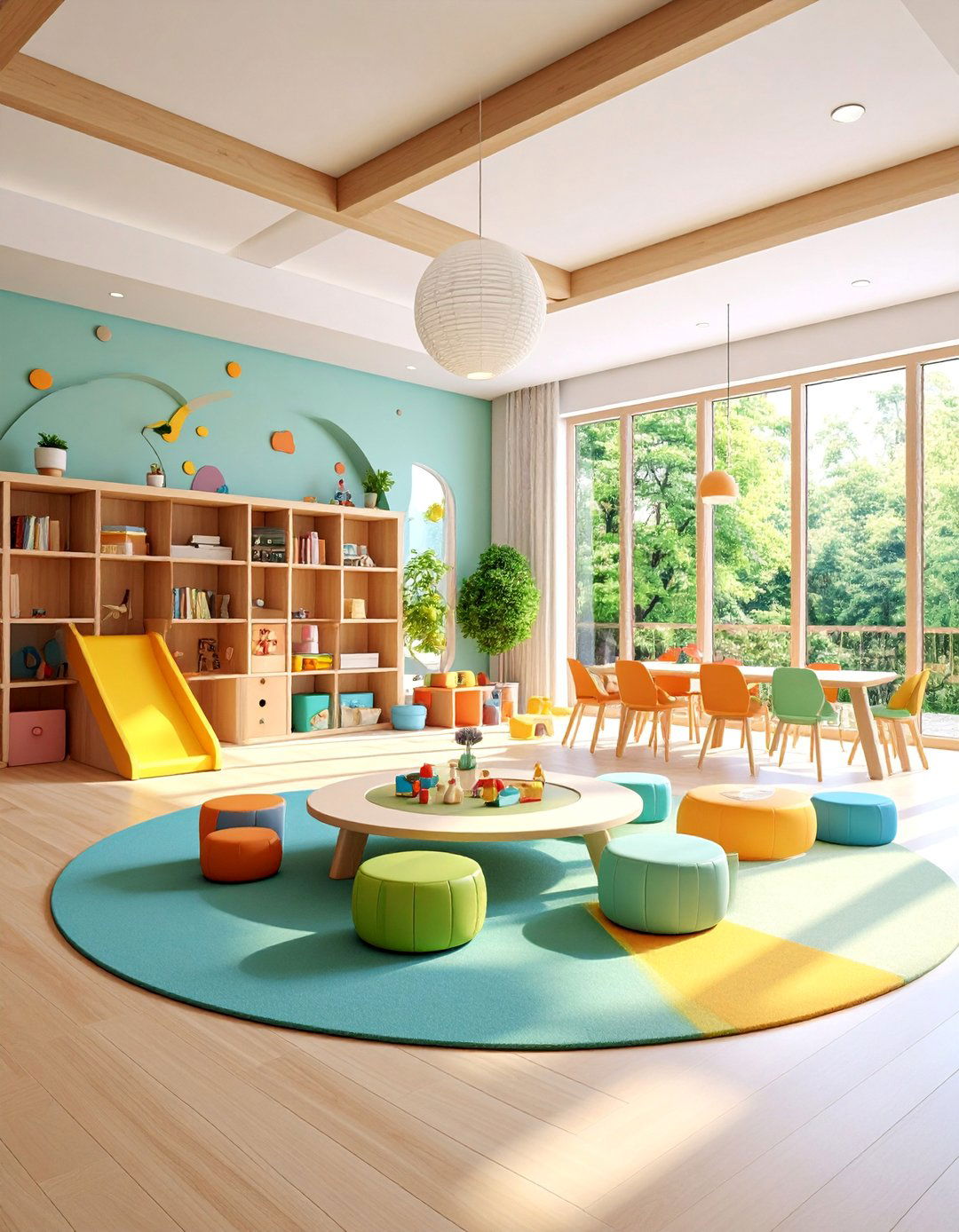
Design a flexible environment that easily adapts as children grow, with modular furniture, upgradeable storage, and evolving activity zones. This forward-thinking approach emphasizes investment pieces that serve multiple age ranges and developmental stages effectively. Modular storage systems can be reconfigured, expanded, or repurposed as children's needs and interests change over time. Furniture choices favor adjustable heights, convertible functions, and timeless designs that grow with children from toddlers through teens. Organization systems use adaptable labeling, flexible containers, and scalable solutions that accommodate changing toy collections and activity preferences. Activity zones can be redefined through moveable furniture, removable decorations, and flexible layouts that support homework, hobbies, and social activities. Color schemes and design elements maintain sophistication while allowing for personal expression and changing preferences. This strategic approach maximizes long-term value while creating a space that truly grows with the family, adapting to new needs while maintaining functionality and style throughout childhood development.
Conclusion:
Successful playroom design balances creativity, functionality, and developmental appropriateness to create spaces where children thrive. The most effective playrooms incorporate thoughtful organization, flexible layouts, and engaging elements that grow with children's changing needs. Whether working with large spaces or small corners, the key lies in understanding each child's interests, developmental stage, and family lifestyle. From sensory-friendly retreats to active adventure zones, modern playroom concepts emphasize purposeful design that supports learning, creativity, and independence. By combining practical storage solutions with inspiring themes and interactive elements, families can create magical environments that foster childhood development while maintaining organized, beautiful homes that serve the entire family's needs effectively.


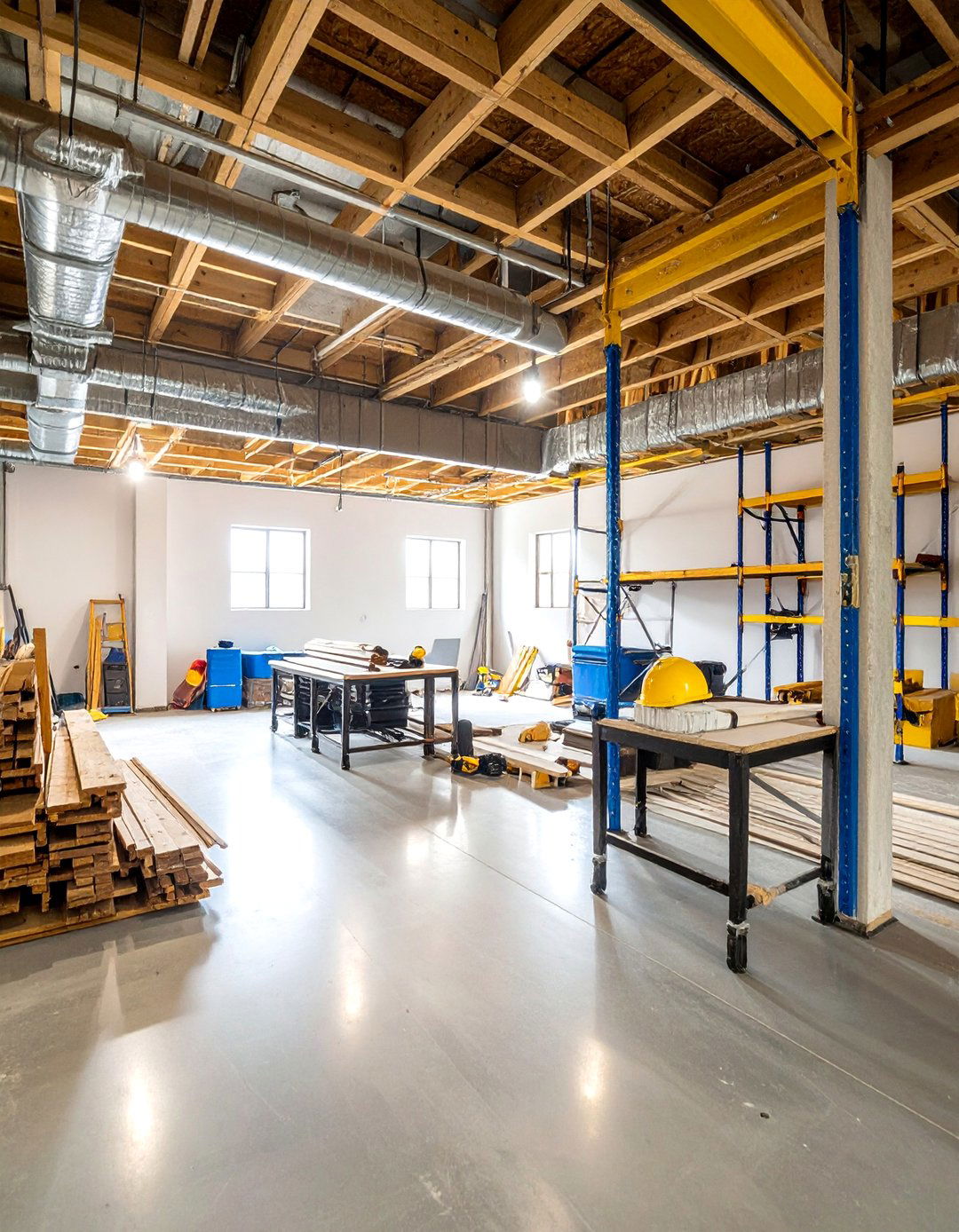


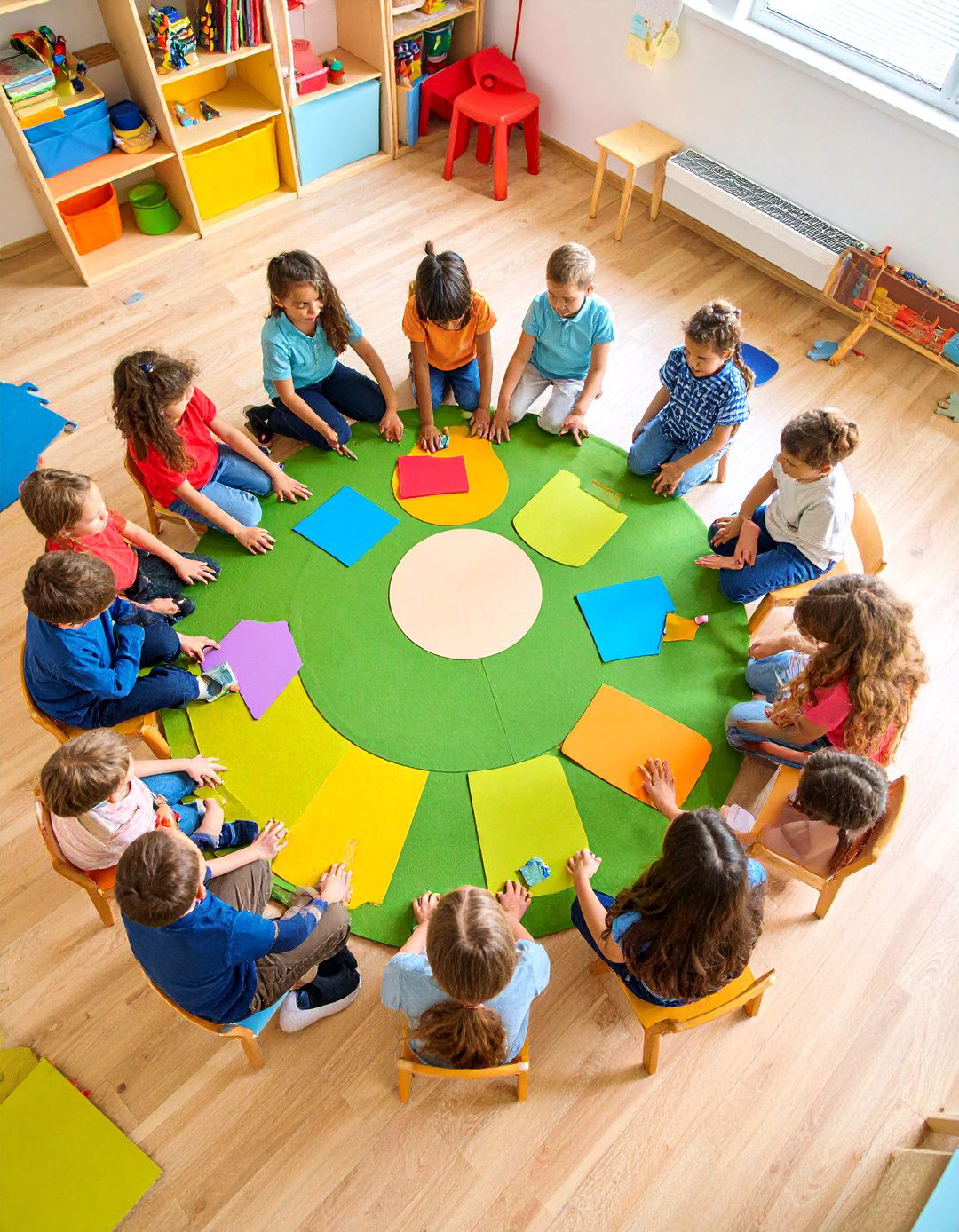
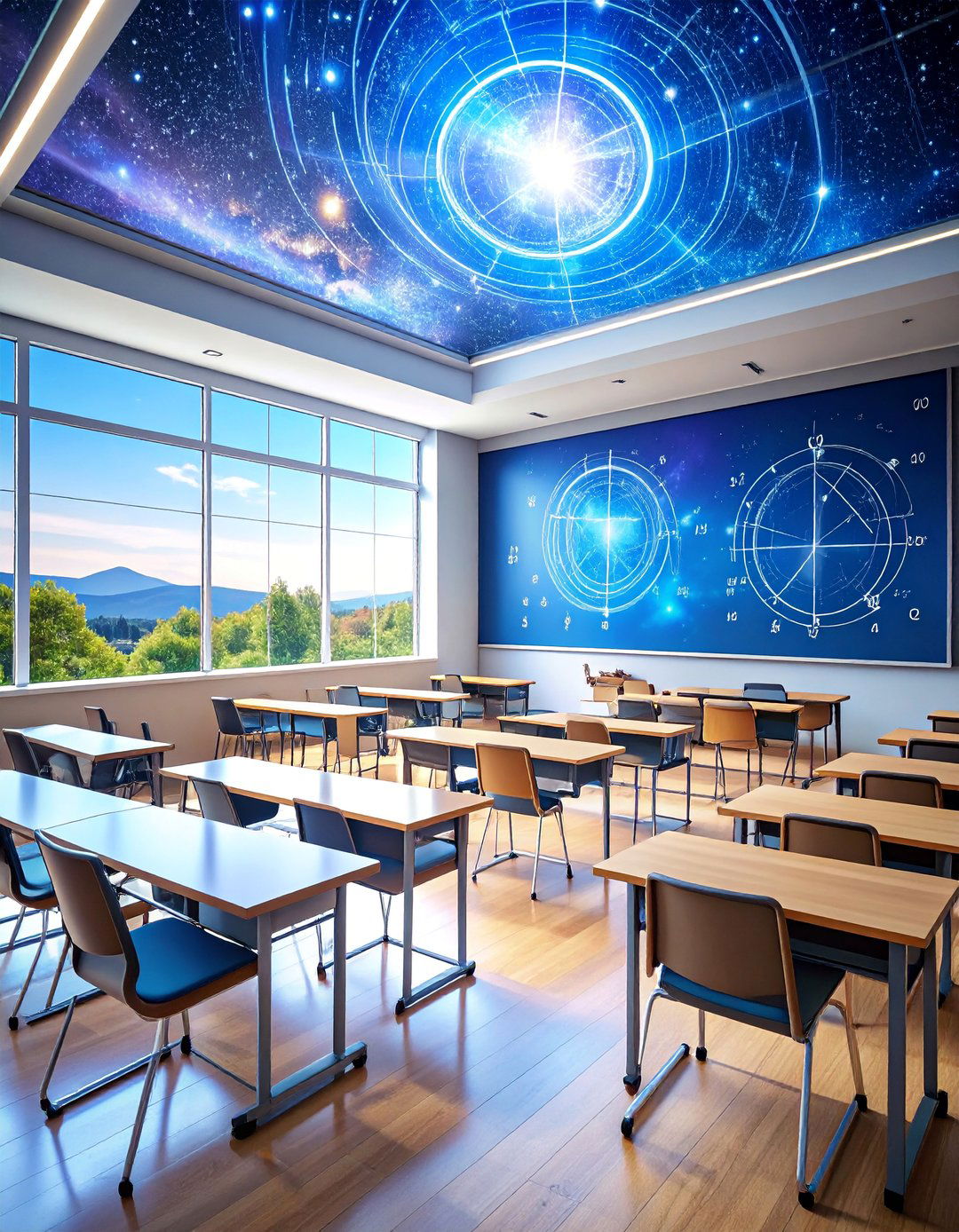

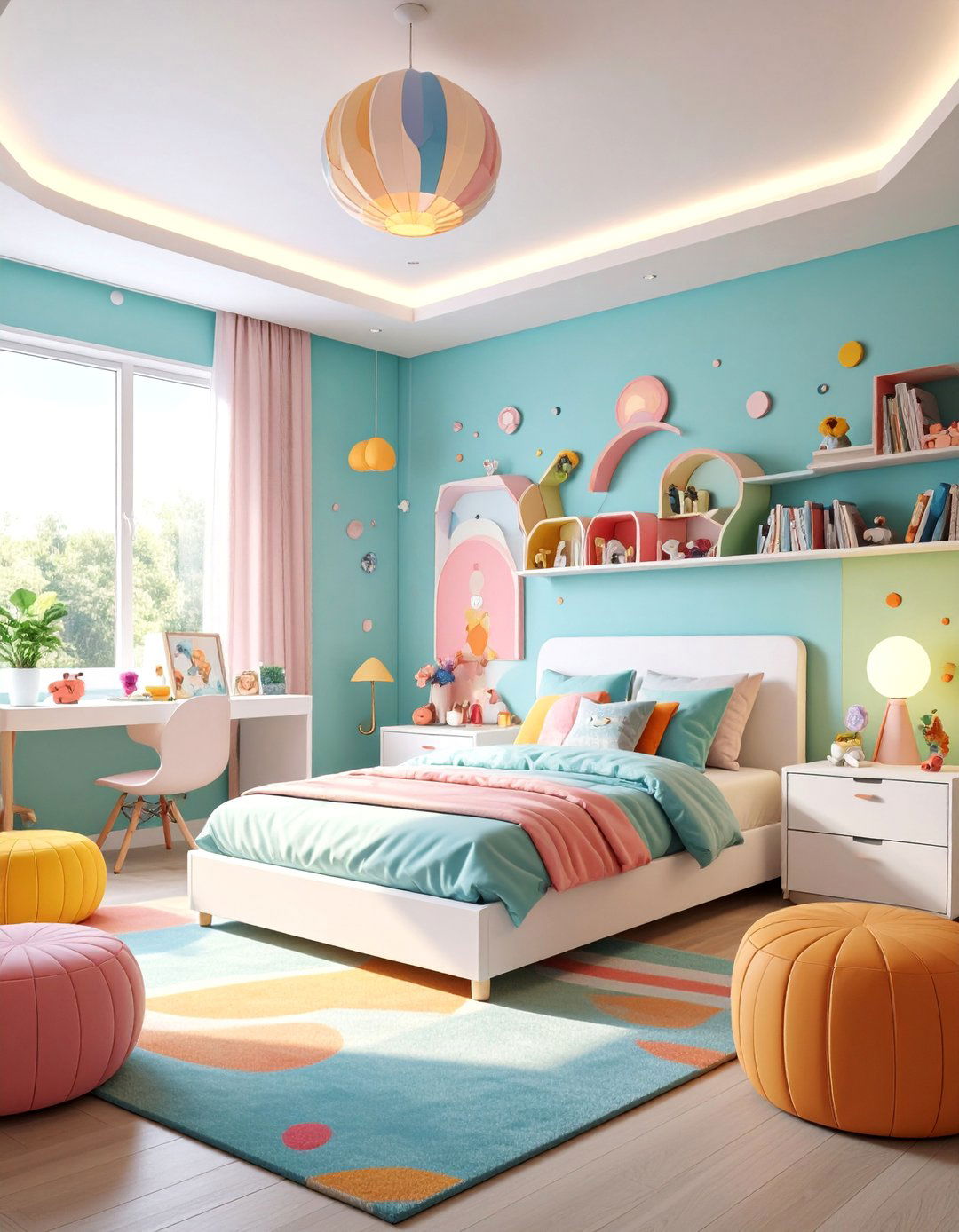
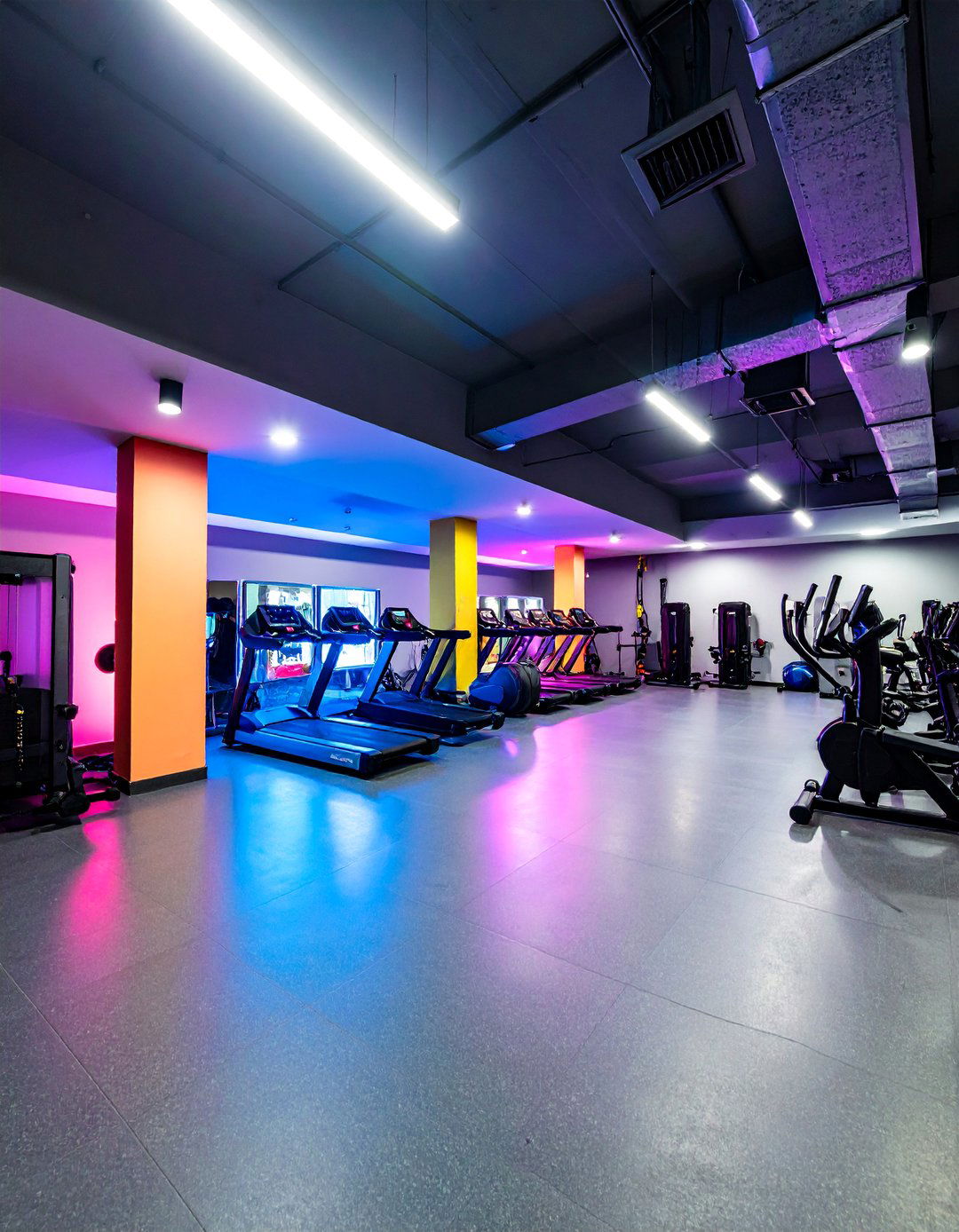

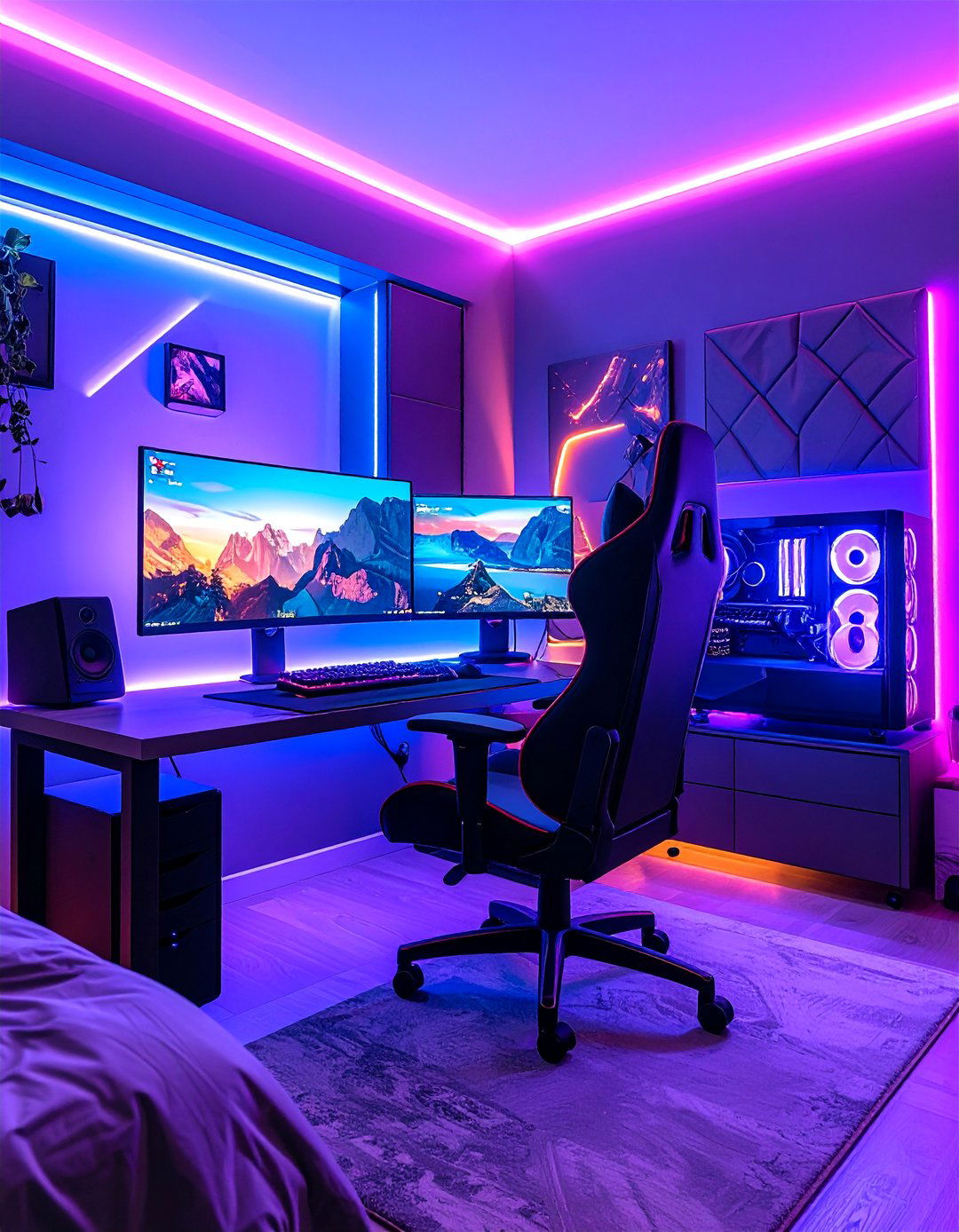

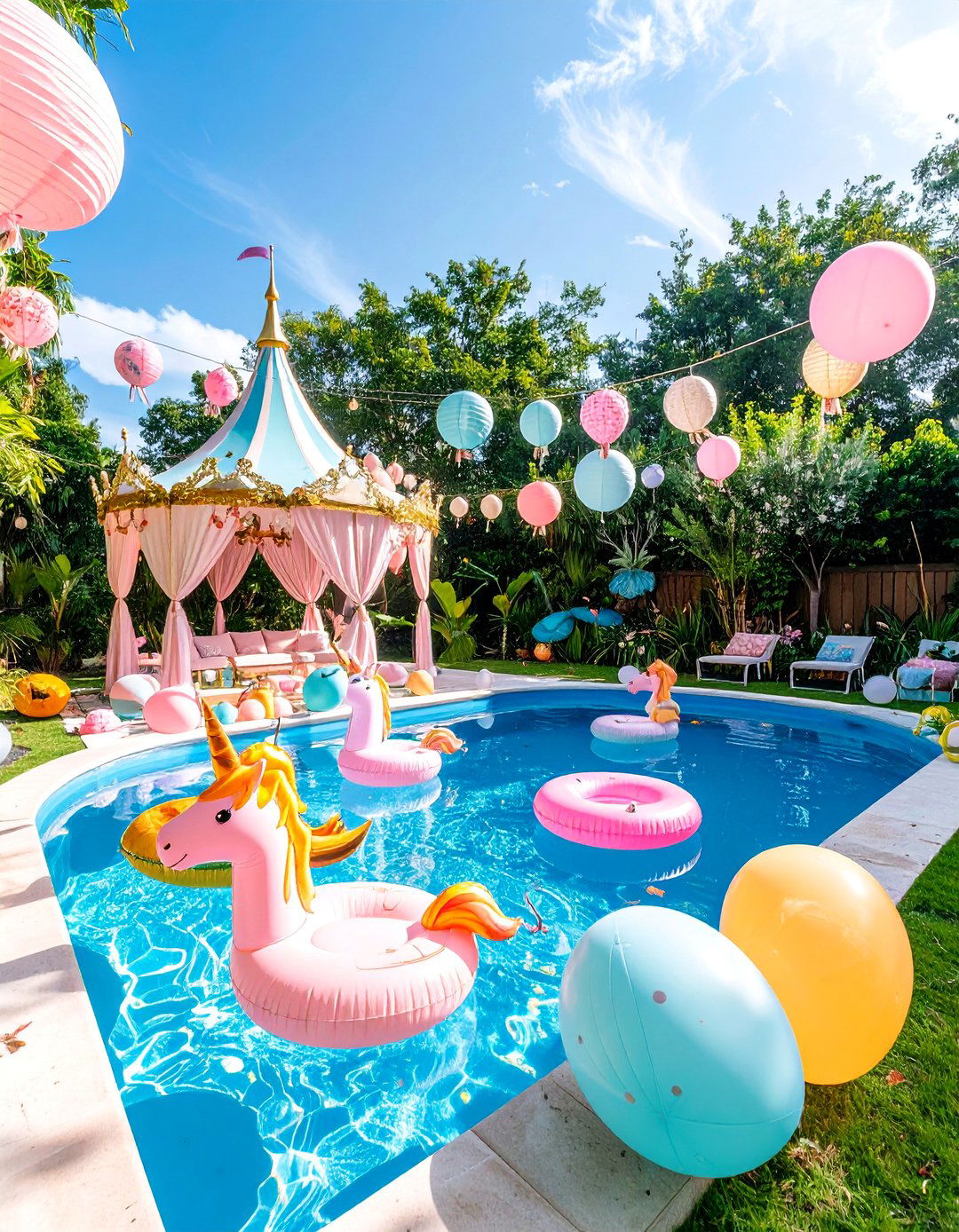

Leave a Reply